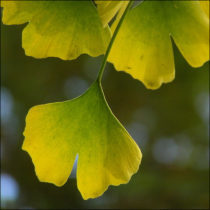Landscape Architecture for Landscape Architects › Forums › GENERAL DISCUSSION › ethics, practical questions
- This topic has 1 reply, 5 voices, and was last updated 15 years, 11 months ago by
 Jason Turner.
Jason Turner.
-
AuthorPosts
-
August 1, 2009 at 1:46 am #173519
 Trace OneParticipant
Trace OneParticipantIs it ethical to continue to install irrigation systems for ornamental landscapes in the central valley of california?
August 1, 2009 at 11:17 am #173542 Jason TurnerParticipant
Jason TurnerParticipantAn interesting question. In a nutshell, I would say that if you are using safely recycled water, then it is fine – but that depends…
I guess it depends on what you are doing with your waste water, on a macro scale, and how much is available on the project, as to whether or not there is adequate available to meet your requirements (or depending on your rainfall patterns, make up the shortfall with harvested rainwater).
On a macroscale, if the local Council treats sewage by the conventional wisdom of taking some dirty water and adding a bunch of clean water to it, then flushing it into the nearest stream (its not quite that crude, but not too far off in many instances) then you are doing everyone a favour by using recycled water. If on the other hand, your local Council is recycling the water for irrigation purposes, it would make no difference in the great scheme of things. If the Counci were recycling to potable standard, then you are back to square one, where in terms of water scarcity, potable water on the landscape is indeed another aspect of our lives as consumers to which we need to become more sensitive.I heard on the radio yesterday that the El Nino cycle has been confirmed as being active in the antipodes, so we are headed for a drought cycle down here (in subsaharan Africa). Water recycling is about to become a really big thing down here again.
August 1, 2009 at 11:56 am #173541 Trace OneParticipant
Trace OneParticipantWe get 10 inches of rain a year. A significant portion of our water comes from snowpack melt, which of course is decreasing. Our groundwater was drawn down so significantly in the nineteen forties that they built a system of canals to capture the snowmelt and river water..The ground water is threatened again, it is completely unregulated. Our two rivers no longer go all the way to the Pacific Ocean..
Recycled water? You might as well be talking about tinkerbell or the good fairy. It does not exist here in central california. There is no provision or requirement for the use of recycled water..
We are vastly built up into industrialized agriculture, and the canal water is sold and regulated by a highly detailed and dated series of laws..Agricultural water has been reduced, because of increasing enviornmental effects of no water on the natural environment, as well as decreasing water supply, and increasing population. Farmers are demonstrting and angry..So. Under those conditions, should we continue to install irrigation for ornamental landscapes (potable water only)?
Wow! Sub Saharan Africa! Hello!!
August 1, 2009 at 12:34 pm #173540 Jason TurnerParticipant
Jason TurnerParticipant“It’s Worse Than That,- He’s Dead, Jim”
10 inches a year! Now that is dry. I have heard about your snow melt problems. You guys are in for a rough ride, by the looks of it.
What is your through put of potable water through the dwelling/estate? Is recycling on site possible? You can install a simple recycling plant very easily and it is not that expensive (relatively) so you can harvest what is going down the drain. From a permaculture perspective, water moved into the atmosphere via transpiration is a ‘rain seed’ as the bacteria that are carried in the transpired water form a nucleus around which water molecules accumulate and form rain [- Rain forests apparently produce their own rain]. Whilst you are a long way off that in the valley, you are sure on the right side of the equation. Better use the water that way than just lose it down the drain to wherever it ends up. I would be inclined to say that the ethical thing to do WOULD be to use it. If you use it wisely on site, you could help rehydrate the soil profile, which would be a good thing.August 1, 2009 at 3:50 pm #173539 Bob LutherParticipant
Bob LutherParticipantTrace – purhaps Jason is right in looking not to eliminate landscape irrigation but to look into increasing the use of reclaimed water as an irrigation source. Irrigation of reclaimed water onto ornamental landscapes works as a great final filter for the water before it re-enters aquifers or waterbodies. Some people have issue using reclaimed water on agricultutral crops, claiming increased risk of contaminates into the crops, so rather than pump non-potable water into the watershed use it for irrigation.
August 1, 2009 at 8:37 pm #173538 Roland BeinertParticipant
Roland BeinertParticipantTrace,
Are there projects that provide examples of what would work better in your area? There must be some out there.August 1, 2009 at 9:50 pm #173537 Trace OneParticipant
Trace OneParticipantNo reclaimed water..Not possible..No sinks, nothing even near these designs, just more irrigation hook-ups..Try again..
We do have projects that are using only seed, and are not irrigated…. I use buckwheat, which does not need water, but I do not know if I can leave it a s a permanent design..(It is erosion control)…Oh well….Thanks for your thoughts!August 1, 2009 at 10:07 pm #173536 Bob LutherParticipant
Bob LutherParticipantwhat city or county are you doing work in that does not have any reclaimed water? Not possible, that is just as narrow minded as me saying shutting the water off to ornamental landscape is not possible.
August 2, 2009 at 6:57 am #173535 Trace OneParticipant
Trace OneParticipantthere ain’t no reclaimed water. It takes it’s own supply system, and we are already very far away from water sources. We do note, on every project, “no reclaimed water available..” …You are right, though this supply system needs to be built…Perhaps I will spend the landscape dollars on making the connection, and leave the erosion control as landscaping..do you have easy access to reclaimed water?
August 2, 2009 at 7:59 am #173534 Jason TurnerParticipant
Jason TurnerParticipantI am currently working on a project on a farm where for technical reasons, we have limited access to water, and are making use of dry land management for cut flower production. Where this becomes relevant to this discussion is that I had a consultation this week with Ken Yeoman, author of ‘Water For Every Farm’ and Keyline designer. In essence, Keyline ploughing moves water from the steep runoff areas laterally to the flatter ridgelines and in so doing creates a sheet of water which rehyrdrates the entire landscape and recharges the water table. [ http://www.yeomansplow.com.au/ ] They have managed some amazing results in dryland brittle environments such as yours. [ For a brief synopsis see also http://www.laceweb.org.au/kff.htm]
Whilst this seems a bit broad to the particular scope of this discussion, it is a means of looking at alternative ways of getting water to a landscape. In terms of permaculture, restoring the hydrological balance within the soil is a key element of success. Village Homes in Davis, California is a text book case where once the soil had been rehydrated through swales, the storm water infiltration improved dramatically, and apparently handles peak storm surges better than any other ‘conventional’ system in the area. Soil hydration is critical, not only to health of the soil and the biosphere but storm water damage control too. You mentioned erosion – Ken Yeoman was saying the keyline ploughing is a very effective way of managing that too.
August 2, 2009 at 8:15 am #173533 Trace OneParticipant
Trace OneParticipantthanks, Jason! sounds interesting. Will look that up, plus permaculture..Like that idea..
August 2, 2009 at 5:32 pm #173532 Bob LutherParticipant
Bob LutherParticipanton almost two-thirds of the project we work on have access to reclaimed water.
August 3, 2009 at 9:25 pm #173531 Roland BeinertParticipant
Roland BeinertParticipantHere’s an article about someone who harvests rainwater in Africa: http://www.theecologist.org/take_action/local_hero/270547/the_man_who_farms_water.html
It doesn’t go into a lot of detail about how the farmer accomplishes it, but the author of the article, Brad Lancaster, also wrote a book called Rainwater Harvesting for Drylands and Beyond. It’s worth reading.
As Jason mentioned, permaculture is a good source of info. I think all the books by Bill Mollison have a section on water in general and on drylands, and you can probably find at least one of the books at the library.
Look into the concept of permaculture zones, as well. When I was working in Reno, we usually did use some form of irrigation, even if it was temporary. But we divided the plants by irrigation zones. The ones that needed the most maintenance and water went around entrances and other places of importance where they would actually be used and enjoyed. The ones that needed no or very little irrigation went to natural areas or gardens that would get less attention.August 7, 2009 at 2:57 pm #173530 DarcyParticipant
DarcyParticipantThere is a company that manufactures a recycled water irrigation system for the homeowner. The company name is “ReWater,” based out of San Diego. I believe the cost for an avg. sized California lot is around $7500. This system collects the gray water from the house, then filters, stores and distributes it to the landscape via a sub-drip irrigation system. This may be the best alternative. BTW, I think it is unethical to deny the farmers of Central CA water for their crops. This state needs to get their act together! Hope this helps.
August 7, 2009 at 4:12 pm #173529 Trace OneParticipant
Trace OneParticipantThank you for your input,Darcy. so if you are in favor of the farmers getting more water, then you would prefer us LA’s to use less water? where is more water for the farmers going to come from? I personally think farming needs to start to move where there is more water – the east coast…I don’t know why farming seemed like such a good idea, in the central valley..I geuss it is the permanent sun, landscape with no rocks, and the idea that water is a limitless resource…
-
AuthorPosts
- You must be logged in to reply to this topic.



